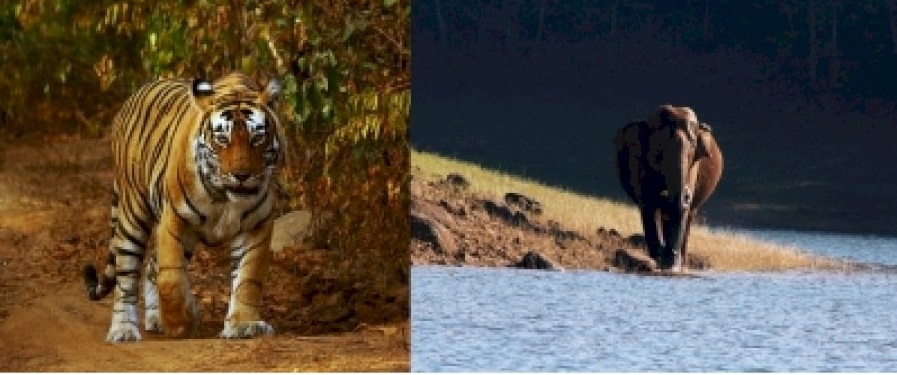Human-animal conflict on rise over the years, both at equal loss: Data
| Date :25-Sep-2022 |

NEW DELHI :
AMIDST the Government’s increased focus on conservation of wildlife, instances of human-animal conflict have increased and resulted in equal loss of life of both humans and animals over the years, as per Government data. As per the information from the Ministry of Environment and Forests, between 2018-19 and 2020-21, a total of 29 tigers were killed by poachers while the deaths of 197 tigers was under scrutiny. A large number of elephants also died due to various reasons including electrocution and others.
The data said that a total of 222 elephants died by electrocution across the country, 45 in train collisions, 29 were killed by poachers and 11 by poisoning during the same period. On the other side, a large number of humans also became victims of the conflict leading to their deaths. Elephants killed 1,579 humans in three years - 585 in 2019-20, 461 in 2020-21, and 533 in 2021-22. So far as the States are concerned, Odisha recorded the highest number of these deaths at 322, followed by Jharkhand at 291, West Bengal at 240, Assam at 229, Chhattisgarh at 183 and Tamil Nadu at 152. So far as the deaths of elephants are concerned, out of the 222 elephant deaths caused by electrocution, Odisha recorded 41, Tamil Nadu 34 and Assam 33.
UP sees over 36 deaths in big cat attacks since 2020
LUCKNOW,
INCREASED man-animal conflict in and around the three main tiger reserves in Uttar Pradesh have emerged as a major cause for concern in recent years. The Pilibhit Tiger Reserve (PTR), Dudhwa Tiger Reserve (DTR) and the upcoming Amangarh Tiger Reserve (ATR) have reported more than three dozen deaths due to attacks by the big cat family -- two dozen killed in Dudhwa alone since 2020. Wildlife experts say that deforestation which is reducing the forest size, expansion of human settlements and agriculture and overgrazing by livestock have led to increased man-animal conflicts.
The sugarcane crops in these areas provide a safe haven for the big cats that hide among the crops and attack any ‘intruder’. “The problem is that people cut down trees for firewood and extend the boundaries of human settlements in and around the tiger reserves. As the forest area gets shrunk, the big cats venture out and this leads to man-animal conflict. People also send their cattle to graze in the forest which again, attracts the wild animals,” said Brij Kishore, a wildlife expert in Pilibhit. Farmers have approached the forest officials, seeking a safe zone. Pilibhit and Dudhwa are the two tiger reserves that are most susceptible to such conflicts.
